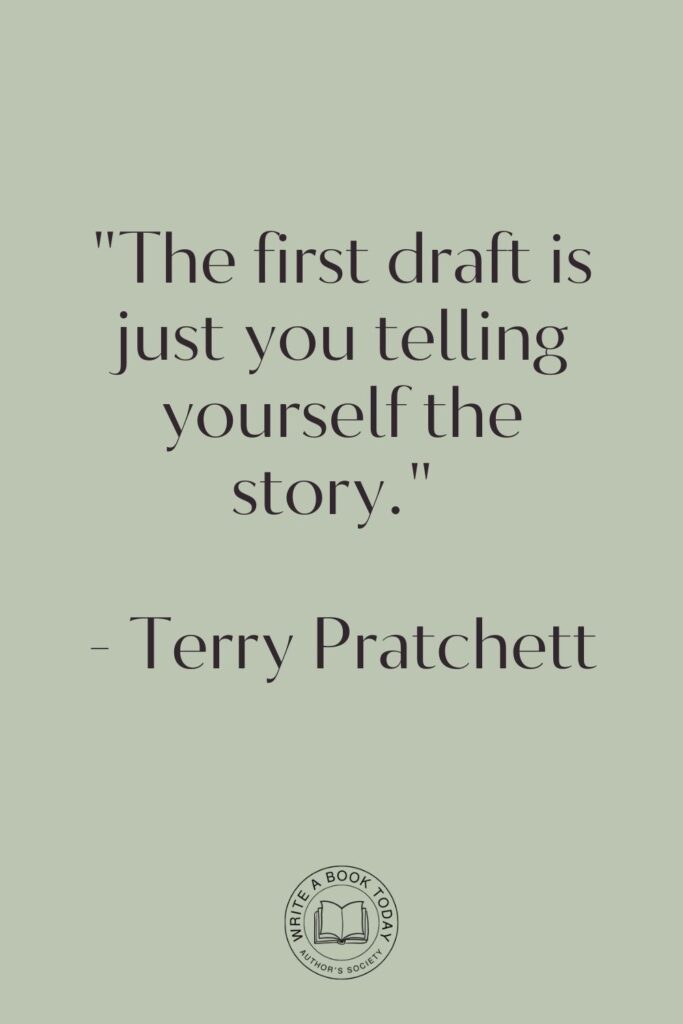Imagine a world where words paint vivid pictures in the mind, where characters breathe life through their actions, and emotions ripple like waves across the page.
This is the enchanting realm of ‘Show, Don’t Tell’, a storytelling technique that transforms ordinary narratives into extraordinary experiences.
But what does it truly mean to show rather than tell, and how can one master this elusive art?
Let’s embark on a journey to unravel the magic behind this technique and discover five engaging steps to weave it into your writing.
Understanding the Concept of ‘Show, Don’t Tell’
The phrase ‘Show, Don’t Tell’ might seem like a cryptic mantra whispered among seasoned writers, but its essence is both profound and simple.
It’s about inviting readers to step into the shoes of your characters, to see the world through their eyes, and to feel the pulse of the narrative as if it were their own heartbeat.
At its core, it’s a dance between words and imagination, where the writer becomes a conductor of emotions and imagery.
Defining ‘Show, Don’t Tell’
To truly grasp the concept, let’s delve into its definition.
‘Show, Don’t Tell’ is a narrative technique that relies on descriptive language, actions, and sensory details to convey emotions, settings, and character traits rather than simply stating them.
It’s the difference between saying, “She was angry,” and painting a picture of her clenched fists, fiery eyes, and a voice that trembles with barely contained fury.
This technique transforms readers from passive observers into active participants in the story, engaging their senses and emotions in a way that mere words cannot.
When crafting your narrative, consider what your characters might be feeling in a scene.
Use their actions, dialogue, and physical responses to illustrate these emotions, allowing readers to deduce feelings without explicitly naming them.
The Importance of Showing in Writing
Why is showing so crucial in writing?
The answer lies in its ability to forge a deep connection between the reader and the story.
Immersing readers in the experience evokes empathy, allowing them to live the moments alongside the characters.
This technique also enriches the narrative, creating a tapestry of vivid imagery that lingers long after the last page is turned.
Moreover, it enhances the pacing and tension, drawing readers into a world where every detail holds significance.
Think of your favourite novels or films. Reflect on how they made you feel immersed in their worlds.
Aim to replicate that sensation by focusing on sensory details and actions in your writing.

The Magic Behind Showing vs. Telling
At the heart of compelling storytelling lies the delicate balance between showing and telling.
While telling provides essential information quickly, showing delves deeper, creating layers of meaning and emotion.
This magical interplay can transform a simple scene into a memorable moment, captivating readers and leaving them yearning for more.
Examples of Show vs. Tell
Consider these examples to illustrate the contrast between showing and telling:
- Telling: The room was messy.
- Showing: Clothes were strewn across the floor, and empty soda cans cluttered the desk, while a pile of dirty dishes towered precariously in the sink.
In the first example, the statement is flat and factual. In the second, the details create a vivid image, inviting readers to visualise the chaos and feel the disarray.
Review your writing for places where you’re telling instead of showing.
Replace those instances with sensory details or actions that convey the same information more vividly.
Feeling lost with your debut novel?
Fiverr Pro connects you with expert editors, designers, and marketers – everything you need to get your book ready for success!

The Emotional Impact of Showing
Showing not only enhances imagery but also amplifies the emotional impact of a narrative.
When readers witness a character’s trembling hands, the scent of rain-soaked earth, or the warmth of a crackling fire, they become emotionally invested.
This engagement fosters a profound connection, allowing readers to experience the highs and lows of the story on a visceral level.
Five Steps to Mastering ‘Show, Don’t Tell’
Now that we’ve unravelled the concept and magic of ‘Show, Don’t Tell’, let’s dive into five practical steps to master this technique and elevate your storytelling prowess.
Step 1: Embrace Sensory Details
Engage your readers’ senses by incorporating vivid sensory details.
Describe the sights, sounds, smells, tastes, and textures of a scene to immerse them fully in the narrative.
For instance, instead of stating, “The garden was beautiful,” paint a picture of vibrant blooms, the hum of bees, the earthy aroma of freshly turned soil, and the gentle rustle of leaves in the breeze.
Consider using a table to organise sensory details for different scenes:
| Scene | Sight | Sound | Smell | Taste | Touch |
|---|---|---|---|---|---|
| Garden | Vibrant blooms | Hum of bees | Earthy soil | Fresh herbs | Soft petals |
| Beach | Golden sand | Waves crashing | Salty air | Sea spray | Warm sun |

Step 2: Use Action to Convey Emotion
Actions speak louder than words. Instead of telling readers how a character feels, show it through their actions.
A character’s trembling hands, a quickened heartbeat, or a lingering gaze can reveal more about their emotional state than a simple statement ever could.
For example, instead of saying “He was nervous,” describe his darting eyes, the sweat beading on his forehead, and the fidgeting fingers that betray his anxiety.
Step 3: Develop Characters Through Dialogue
Dialogue is a powerful tool for character development. Use it to reveal personality traits, motivations, and emotions.
Let characters’ words and the way they speak convey their inner world.
Instead of telling readers that a character is sarcastic, let their witty remarks and dry humour speak for themselves.
This approach adds depth and authenticity to your characters, making them more relatable and engaging.
Step 4: Create Vivid Settings
Transport readers to the heart of your story by crafting vivid settings.
Use descriptive language to evoke a sense of place, whether it’s a bustling city street, a tranquil forest, or a cosy café.
Consider the atmosphere, weather, and time of day to enhance the mood and immerse readers in the environment.
By painting a rich backdrop, you create a stage where your characters can come to life.
Google Docs is for notes. Scrivener is for novels. Upgrade your writing game and try it for free today!

Step 5: Balance Showing and Telling
While showing is essential, there are moments when telling can be more effective.
Use telling to convey straightforward information or to summarise less significant details.
Finding the right balance between showing and telling ensures that your narrative remains engaging and dynamic.
Remember, not every moment requires an elaborate description—sometimes, a simple statement suffices to move the story forward.
As you write, periodically assess your balance of showing and telling.
Ensure that key emotional and sensory moments are shown while background information is conveyed concisely through telling.
Common Mistakes and How to Avoid Them
Even the most experienced writers can fall into the trap of overusing or underusing the ‘Show, Don’t Tell’ technique.
Here are some common mistakes to watch out for and tips on how to avoid them.

Overusing Show or Tell
One of the pitfalls of mastering this technique is the tendency to overuse either showing or telling.
Overly descriptive passages can overwhelm readers, while excessive telling can make the narrative feel flat.
Strive for a harmonious balance, allowing each moment to shine with the appropriate level of detail.
Neglecting Character Development
While focusing on sensory details and settings, it’s easy to overlook character development.
Remember that characters are the heart of your story. Use their actions, dialogue, and interactions to reveal their personalities, desires, and growth.
A well-developed character will captivate readers and drive the narrative forward.
Inspiration from Great Writers
To truly understand the power of ‘Show, Don’t Tell’, let’s draw inspiration from renowned authors who have mastered this technique.
Their works offer valuable lessons and techniques that can elevate your storytelling skills.
No marketing platform? No social following? No problem!
Publisher Rocket helps you market your debut novel like a pro.
It’s a gamechanger for debut authors – try it today!


Literary Examples of ‘Show, Don’t Tell’
In J.K. Rowling’s Harry Potter series, Hogwarts is not just described as magical; it is shown through the grandeur of its halls, the warmth of its torches, and the enchantment of its hidden passages.
This immersive approach allows readers to experience the wonder of the wizarding world firsthand.
Techniques from Renowned Authors
Authors like F. Scott Fitzgerald and Harper Lee have employed ‘Show, Don’t Tell’ to great effect.
Fitzgerald’s The Great Gatsby captures the opulence and longing of the Jazz Age through vivid descriptions and symbolism, while Lee’s To Kill a Mockingbird uses Scout’s observations and interactions to reveal the complexities of racial injustice in the American South.
Final Thoughts on the Journey of Mastery
Mastering the art of ‘Show, Don’t Tell’ is a journey, one that transforms you from a mere storyteller into a creator of immersive worlds and unforgettable characters.
As you hone this skill, remember that it’s not just about words on a page; it’s about forging connections, evoking emotions, and inviting readers to embark on a shared adventure. So embrace the magic, experiment with your narrative, and watch as your stories come alive in ways you never imagined.








